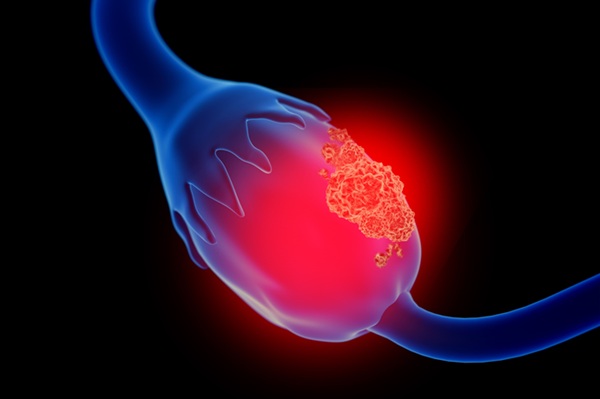Serum Biomarkers Differentiates COVID-19 From Classic Cytokine Storm Syndromes
|
By LabMedica International staff writers Posted on 10 Jun 2021 |
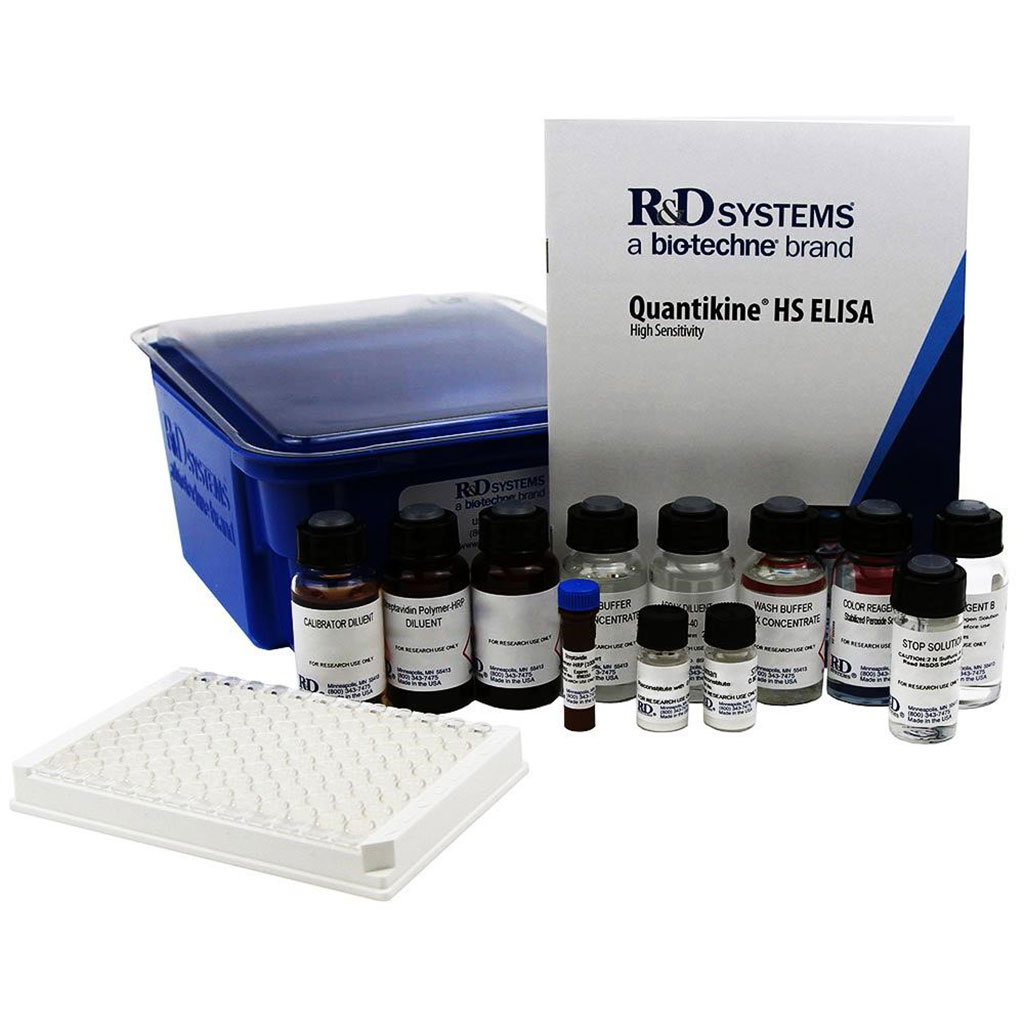
Image: Quantikine ELISA kits are available in a range of formats for measuring intracellular and extracellular proteins (Photo courtesy of R&D Systems)
A cytokine storm, also called hypercytokinemia, is a physiological reaction in humans and other animals in which the innate immune system causes an uncontrolled and excessive release of pro-inflammatory signaling molecules called cytokines.
Infection with the novel coronavirus SARS-CoV-2 triggers severe illness with high mortality in a subgroup of patients. Such critical course of coronavirus disease (COVID)-19 is thought to associate with cytokine storm as in macrophage activation syndrome or secondary hemophagocytic lymphohistiocytosis.
An international team of Pediatric Rheumatologist and Immunologists led by the University Children’s Hospital Muenster team (Muenster, Germany) examined whether immune activation in COVID-19 mimics conditions seen in secondary hemophagocytic lymphohistiocytosis (sHLH) or macrophage activation syndrome (MAS), both classic cytokine storm syndromes, and analyzed 83 serum samples from 30 patients with COVID-19. The team also included 20 sHLH serum samples, as well as 17 samples of MAS linked to adult-onset Still’s disease. These serum samples were collected from adults in previous studies. Meanwhile, four samples of juvenile sHLH and nine of juvenile MAS, as well as nine from health controls, were collected.
The scientists used bead array assay, as well as single‐marker ELISA, to quantify levels of 22 biomarkers in the included serum samples. These included IL-1, IL-1 receptor antagonist (Ra), IL-4, IL-6, IL-8, IL-10, IL-18, TNF, interferon (IFN), IFN, IFN-, MCP2 (CCL8), MCP3 (CCL7), CXCL9, CXCL10, MCSF, LRG1, soluble Fas ligand (sFasL), intracellular adhesion molecule 1 (ICAM-1), VCAM-1 and Galectin-3 (R&D Systems, Minneapolis, MN, USA). Data acquisition and analysis was performed on a MAGPIX instrument (Merck Millipore, Darmstadt, Germany).
The scientists observed dramatic activation in sHLH/MAS of the interleukin(IL)-18-interferon (IFN)-γ axis, while increased serum levels of IL-1 receptor antagonist (IL-1Ra), intracellular adhesion molecule 1 (ICAM-1) and IL-8, as well as strongly reduced levels of soluble Fas ligand (sFasL) in course of SARS-CoV-2 infection discriminating immune dysregulation in critical COVID-19 from the investigated well-recognized cytokine storm conditions.
Christoph Kessel, PhD, the lead author of the study, said, “Our analyses may further raise doubt regarding the efficacy of clinical trials targeting key molecules and pathways associated with sHLH and/or MAS in the treatment of COVID-19. Therapeutic blockade of IFN-, which appears as promising therapeutic option in treating HLH and potentially also MAS, may be less effective in COVID-19, as the overall activation of the IL-18-IFN- axis seems far less pronounced in context of SARS-CoV-2 infection. In contrast to IL-18 and IFN-, IL-1Ra levels in COVID-19 are substantially elevated.”
The authors concluded that serum biomarker profiles clearly separate COVID-19 from MAS or sHLH, which questions the significance of systemic hyperinflammation following SARS-CoV-2 infection as well as the efficacy of drugs targeting key molecules and pathways specifically associated with systemic cytokine storm conditions in the treatment of COVID-19. The study was published originally April 20, 2021 in the journal Arthritis & Rheumatology.
Related Links:
University Children’s Hospital Muenster
R&D Systems
Merck Millipore
Infection with the novel coronavirus SARS-CoV-2 triggers severe illness with high mortality in a subgroup of patients. Such critical course of coronavirus disease (COVID)-19 is thought to associate with cytokine storm as in macrophage activation syndrome or secondary hemophagocytic lymphohistiocytosis.
An international team of Pediatric Rheumatologist and Immunologists led by the University Children’s Hospital Muenster team (Muenster, Germany) examined whether immune activation in COVID-19 mimics conditions seen in secondary hemophagocytic lymphohistiocytosis (sHLH) or macrophage activation syndrome (MAS), both classic cytokine storm syndromes, and analyzed 83 serum samples from 30 patients with COVID-19. The team also included 20 sHLH serum samples, as well as 17 samples of MAS linked to adult-onset Still’s disease. These serum samples were collected from adults in previous studies. Meanwhile, four samples of juvenile sHLH and nine of juvenile MAS, as well as nine from health controls, were collected.
The scientists used bead array assay, as well as single‐marker ELISA, to quantify levels of 22 biomarkers in the included serum samples. These included IL-1, IL-1 receptor antagonist (Ra), IL-4, IL-6, IL-8, IL-10, IL-18, TNF, interferon (IFN), IFN, IFN-, MCP2 (CCL8), MCP3 (CCL7), CXCL9, CXCL10, MCSF, LRG1, soluble Fas ligand (sFasL), intracellular adhesion molecule 1 (ICAM-1), VCAM-1 and Galectin-3 (R&D Systems, Minneapolis, MN, USA). Data acquisition and analysis was performed on a MAGPIX instrument (Merck Millipore, Darmstadt, Germany).
The scientists observed dramatic activation in sHLH/MAS of the interleukin(IL)-18-interferon (IFN)-γ axis, while increased serum levels of IL-1 receptor antagonist (IL-1Ra), intracellular adhesion molecule 1 (ICAM-1) and IL-8, as well as strongly reduced levels of soluble Fas ligand (sFasL) in course of SARS-CoV-2 infection discriminating immune dysregulation in critical COVID-19 from the investigated well-recognized cytokine storm conditions.
Christoph Kessel, PhD, the lead author of the study, said, “Our analyses may further raise doubt regarding the efficacy of clinical trials targeting key molecules and pathways associated with sHLH and/or MAS in the treatment of COVID-19. Therapeutic blockade of IFN-, which appears as promising therapeutic option in treating HLH and potentially also MAS, may be less effective in COVID-19, as the overall activation of the IL-18-IFN- axis seems far less pronounced in context of SARS-CoV-2 infection. In contrast to IL-18 and IFN-, IL-1Ra levels in COVID-19 are substantially elevated.”
The authors concluded that serum biomarker profiles clearly separate COVID-19 from MAS or sHLH, which questions the significance of systemic hyperinflammation following SARS-CoV-2 infection as well as the efficacy of drugs targeting key molecules and pathways specifically associated with systemic cytokine storm conditions in the treatment of COVID-19. The study was published originally April 20, 2021 in the journal Arthritis & Rheumatology.
Related Links:
University Children’s Hospital Muenster
R&D Systems
Merck Millipore
Latest Immunology News
- Blood-Based Liquid Biopsy Model Analyzes Immunotherapy Effectiveness
- Signature Genes Predict T-Cell Expansion in Cancer Immunotherapy
- Molecular Microscope Diagnostic System Assesses Lung Transplant Rejection
- Blood Test Tracks Treatment Resistance in High-Grade Serous Ovarian Cancer
- Luminescent Probe Measures Immune Cell Activity in Real Time
- Blood-Based Immune Cell Signatures Could Guide Treatment Decisions for Critically Ill Patients
- Novel Tool Predicts Most Effective Multiple Sclerosis Medication for Patients
- Companion Diagnostic Test for CRC Patients Identifies Eligible Treatment Population
- Novel Tool Uses Deep Learning for Precision Cancer Therapy
- Companion Diagnostic Test Identifies HER2-Ultralow Breast Cancer and Biliary Tract Cancer Patients
- Novel Multiplex Assay Supports Diagnosis of Autoimmune Vasculitis
- Blood Test Predicts Immunotherapy Efficacy in Triple-Negative Breast Cancer
- Simple Genetic Testing Could Predict Treatment Success in Multiple Sclerosis Patients
- Novel Gene Signature Predicts Immunotherapy Response in Advanced Kidney Cancers
- New Technology Deciphers Immune Cell Communication to Predict Immunotherapy Response
- AI Model Accurately Predicts MSI Tumor and Immune Checkpoint Inhibitor Responsiveness
Channels
Clinical Chemistry
view channel
VOCs Show Promise for Early Multi-Cancer Detection
Early cancer detection is critical to improving survival rates, but most current screening methods focus on individual cancer types and often involve invasive procedures. This makes it difficult to identify... Read more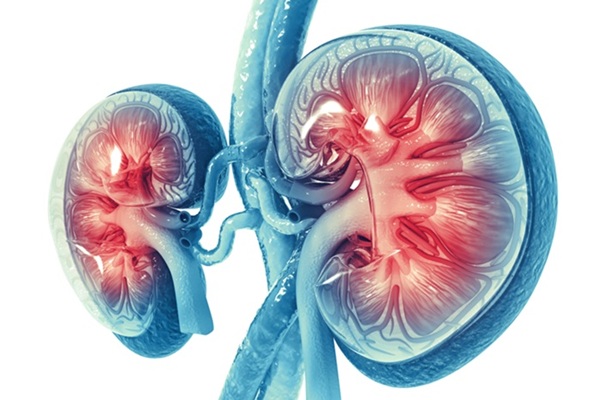
Portable Raman Spectroscopy Offers Cost-Effective Kidney Disease Diagnosis at POC
Kidney disease is typically diagnosed through blood or urine tests, often when patients present with symptoms such as blood in urine, shortness of breath, or weight loss. While these tests are common,... Read moreMolecular Diagnostics
view channel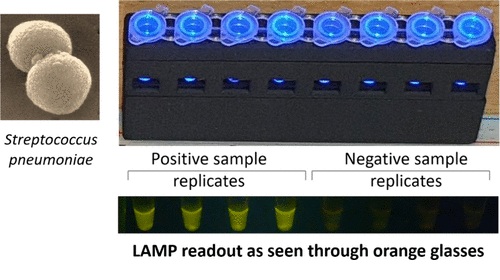
New Diagnostic Method Detects Pneumonia at POC in Low-Resource Settings
Pneumonia continues to be one of the leading causes of death in low- and middle-income countries, where limited access to advanced laboratory infrastructure hampers early and accurate diagnosis.... Read more
Blood Immune Cell Analysis Detects Parkinson’s Before Symptoms Appear
Early diagnosis of Parkinson’s disease remains one of the greatest challenges in neurology. The condition, which affects nearly 12 million people globally, is typically identified only after significant... Read moreHematology
view channel
ADLM’s New Coagulation Testing Guidance to Improve Care for Patients on Blood Thinners
Direct oral anticoagulants (DOACs) are one of the most common types of blood thinners. Patients take them to prevent a host of complications that could arise from blood clotting, including stroke, deep... Read more
Viscoelastic Testing Could Improve Treatment of Maternal Hemorrhage
Postpartum hemorrhage, severe bleeding after childbirth, remains one of the leading causes of maternal mortality worldwide, yet many of these deaths are preventable. Standard care can be hindered by delays... Read more
Pioneering Model Measures Radiation Exposure in Blood for Precise Cancer Treatments
Scientists have long focused on protecting organs near tumors during radiotherapy, but blood — a vital, circulating tissue — has largely been excluded from dose calculations. Each blood cell passing through... Read moreMicrobiology
view channel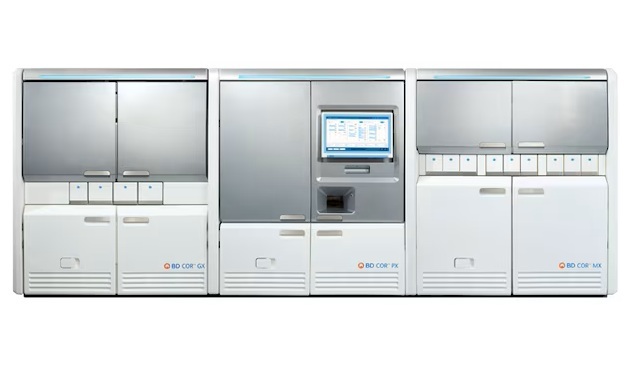
High-Throughput Enteric Panels Detect Multiple GI Bacterial Infections from Single Stool Swab Sample
Gastrointestinal (GI) infections are among the most common causes of illness worldwide, leading to over 1.7 million deaths annually and placing a heavy burden on healthcare systems. Conventional diagnostic... Read more
Fast Noninvasive Bedside Test Uses Sugar Fingerprint to Detect Fungal Infections
Candida bloodstream infections are a growing global health threat, causing an estimated 6 million cases and 3.8 million deaths annually. Hospitals are particularly vulnerable, as weakened patients after... Read morePathology
view channel
New Molecular Analysis Tool to Improve Disease Diagnosis
Accurately distinguishing between similar biomolecules such as proteins is vital for biomedical research and diagnostics, yet existing analytical tools often fail to detect subtle structural or compositional... Read more
Tears Offer Noninvasive Alternative for Diagnosing Neurodegenerative Diseases
Diagnosing and monitoring eye and neurodegenerative diseases often requires invasive procedures to access ocular fluids. Ocular fluids like aqueous humor and vitreous humor contain valuable molecular information... Read moreTechnology
view channel
Cell-Sorting Device Uses Electromagnetic Levitation to Precisely Direct Cell Movement
Sorting different cell types—such as cancerous versus healthy or live versus dead cells—is a critical task in biology and medicine. However, conventional methods often require labeling, chemical exposure,... Read more
Embedded GPU Platform Enables Rapid Blood Profiling for POC Diagnostics
Blood tests remain a cornerstone of medical diagnostics, but traditional imaging and analysis methods can be slow, costly, and reliant on dyes or contrast agents. Now, scientists have developed a real-time,... Read moreIndustry
view channel
Qiagen Acquires Single-Cell Omics Firm Parse Biosciences
QIAGEN (Venlo, Netherlands) has entered into a definitive agreement to fully acquire Parse Biosciences (Seattle, WA, USA), a provider of scalable, instrument-free solutions for single-cell research.... Read more
Puritan Medical Products Showcasing Innovation at AMP2025 in Boston
Puritan Medical Products (Guilford, ME, USA), the world’s most trusted manufacturer of swabs and specimen collection devices, is set to exhibit at AMP2025 in Boston, Massachusetts, from November 11–15.... Read more
Advanced Instruments Merged Under Nova Biomedical Name
Advanced Instruments (Norwood, MA, USA) and Nova Biomedical (Waltham, MA, USA) are now officially doing business under a single, unified brand. This transformation is expected to deliver greater value... Read more













